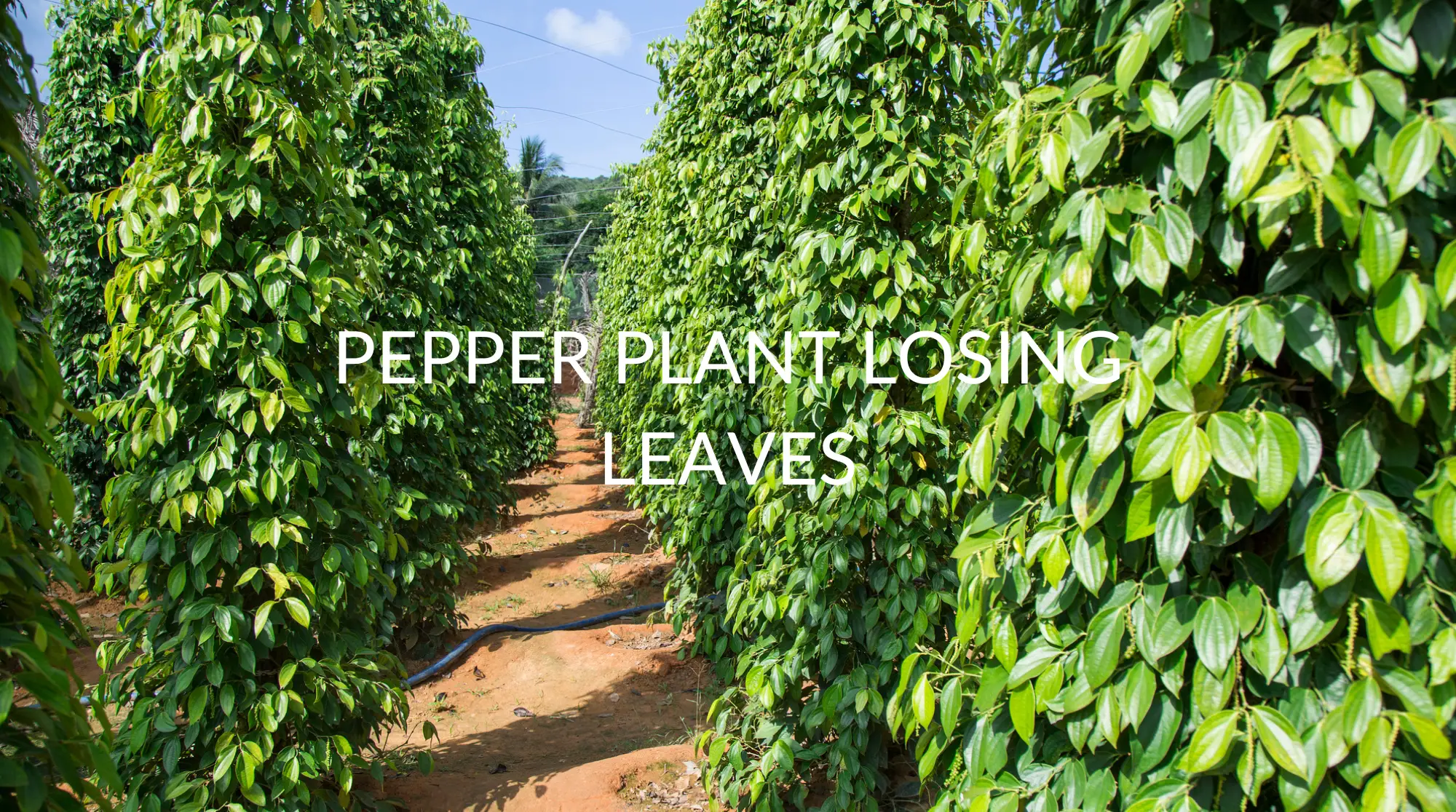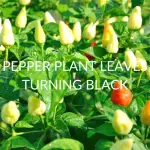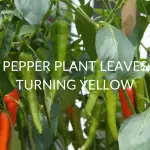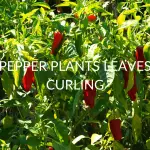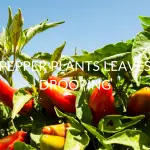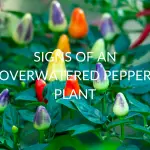Have you been enjoying your hard work and admiring your pepper plants only to find that they’ve been losing their leaves? Should you panic and kiss your sweet, possibly spicy babies goodbye, or is there hope for them yet? As worried as you might be (like all great pepper caretakers), with a little knowledge and action, they’ll be just fine.
When pepper plants begin to lose their leaves, this usually indicates a problem with watering, be it over or under. Being cognizant of how often you should water your plants is the first step in mitigating the issue of leaf loss. Other factors such as age, nutrient deficiency, pests, and sun shock can cause this as well.
It can be a bit overwhelming to learn that pepper plants lose their leaves due to so many varying reasons- and you might be worried that you will never figure out what exactly is causing the issue. Thankfully, this article will provide all the necessary information about why pepper plants lose their leaves, the different threats to their leaves staying intact, and more.
Why Is My Pepper Plant Losing Leaves?
There are different reasons why pepper plants lose their leaves, including some that were mentioned above. From bugs, weather, disease, your caring habits for your pepper plant, and other factors, the leaves of your plant can face a lot of threats. However, with the right information, you can learn to prevent these factors from harming your pepper plant.
Overwatering
Although pepper plants need plenty of water to aid in their survival, too much of it can be a negative thing for their growth. You can identify the issue of overwatering your pepper plant in a few ways, one being to observe the coloration of the leaves that have fallen off or are about to fall off. If they’re yellow, chances are your plant is being overwatered.
Another way you can determine if you’re watering your pepper plant too much is to take note of how often you water your plants. If you’re watering them more than once to two times a week, you are likely overwatering them and can stand to lessen the amount a bit. You should also refrain from watering your pepper plants in the heat of the day.
Another indicator of overwatering your pepper plants is root rot. If you notice that your pepper plant leaves are falling off, are yellow, and the stems look mushy, especially closer to the ground, your plant may be suffering from root rot. In these cases, you should stop watering immediately and let the area dry up for a few days before commencing your watering schedule.
Overwatering is a big issue for your pepper plants for multiple reasons. On top of wreaking havoc on its root system, it also can cause flooding and edema in its leaves. It is important that you keep an eye on the bottom of your pepper plants to make sure damage isn’t occurring from the ground up due to your plant becoming oversaturated with H2O.
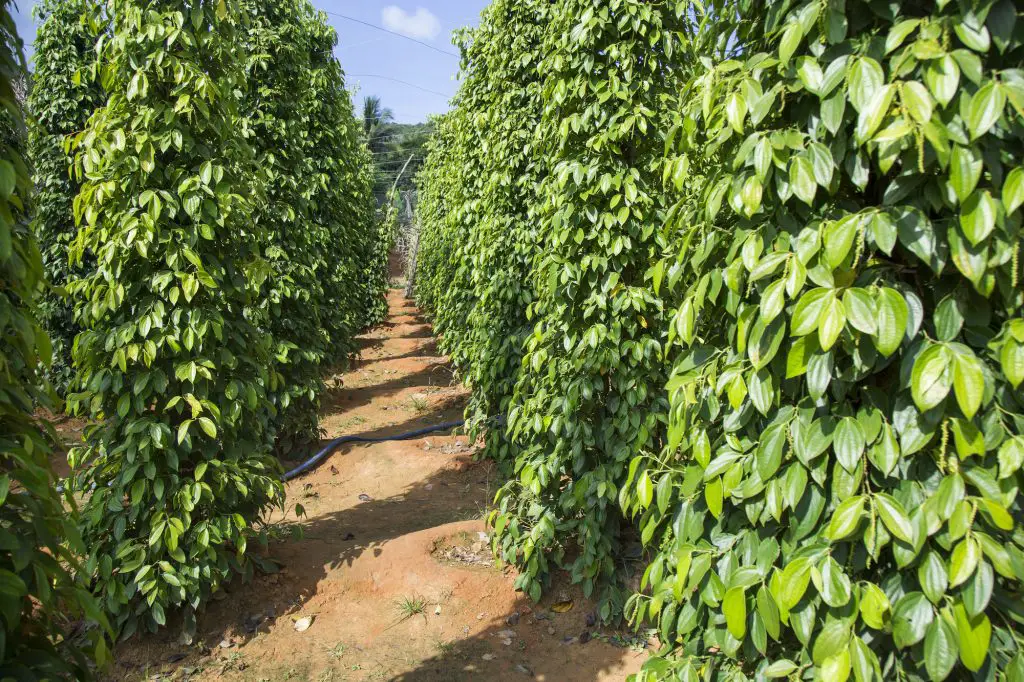
Underwatering
When a pepper plant is underwater, it will drop some of its leaves to save the little water it does have for the most vital pieces of the plant. If you observe that your leaves feel very dry, brittle, crinkly, or crispy, it is very likely that your plant is underwatered. Another sign of underwatering is leaves that are browning.
Another sign of your pepper plant being underwatered is noticing the ground around it is cracking or very dry looking. This indicates that the ground has likely not been watered enough to retain sufficient moisture for your plant to remain healthy. If you spot some browning on just the tips of your pepper plant leaves, this is also a sign of underwatering.
More signs of underwatering pepper plants include observing growth in your plant that is slower than usual or slower than other pepper plants grown by other pepper growers. This will happen to your pepper plants if you water them enough so they survive and not necessarily die, but still not enough to allow for them to grow as they should at a normal pace.
Other signs that signify you’re underwatering your pepper plant include drooping leaves that have little to no life in them, such as looking limp and “sad.” If you notice this in your pepper plant, you should try increasing the amount of times per week you water your garden. Finally, if you’re growing your pepper plant in a container, feel the soil to check if it’s dry.
Sun Scorch
Another factor that contributes to leaves falling off of pepper plants is sun scorching, something that happens to pepper plants after they receive too much sun in a given time. Pepper plants are also at risk of being sun-scorched if you water them during the morning or afternoon hours. Watering plant leaves that will later bake under the sun is not advised.
There are several signs to note if your plant starts to become sun stressed. One sign is leaves that will begin to look bleached, very light green or a grayish hue. More signs you should be aware of are if any of your pepper plant’s new growth begins to wilt and die. Brown, dry spots on your pepper plant leaves are also a sign of too much sun.
Your pepper plant may have discolored leaf veins if it is receiving too much sun, as well as dry, dead leaves that will eventually wilt. Your pepper plant may even have very slow growth or completely stunted growth if sun stress becomes severe enough. Sun will not just damage your pepper plant’s leaves but its stem as well.
Location
Pepper plants require a variety of different things to be healthy and thrive, so if you choose a spot that isn’t quite ideal for your plants, you may witness some leaf loss. It is very important to be mindful when choosing a spot to grow your pepper plants, as they require plenty of sunlight (but not too much!), moist, well-draining, nutritious soil that’s loamy and aerated.
If you have chosen to grow your pepper plants in a very shady area, they may not receive enough sunlight to help them flourish. Too much shade and not enough sunlight will result in a reduction of chlorophyll production, thereby greatly slowing down the process of photosynthesis. When this happens, your pepper plants will essentially starve.
If you’re worried that you’ve chosen a not-so-great spot for your pepper plants to grow, there are a few signs you can look for confirmation. One sign is to look for a yellow/white color due to a lack of photosynthesis in your plant. Another is that your plant may begin to drop its leaves altogether.
Pepper plants that aren’t receiving adequate amounts of sunlight may appear leggy or stretched. This is because they’re stressed from the lack of sunlight and are trying to move towards a brighter area. Other signs are abnormally small leaves and little to no peppers or flowers being produced on your plants.
Cold Temperatures
Since peppers are warm weather-loving plants, they can become stressed easily when introduced to colder climates or sudden drops in temperature. One way you can tell that your pepper plant is stressed due to colder temperatures is if you can remember a recent drop in temperature in your area. Sometimes just a few degrees is all it takes to stress a plant.
If you notice your pepper plant looking thinned out and random leaves begin to fall off it (not necessarily from bottom to top or vice versa), you should suspect cold temperatures as the culprit for stressing your plant. Pepper plants prefer temperatures around approximately 60-90 degrees Fahrenheit and will usually die if they reach temperatures below 55 degrees.
Will The Leaves Grow Back On My Pepper Plant?
You may be curious to know if your pepper plant can regrow its leaves after they have been damaged and have fallen off. Depending on what caused your plant’s leaves to fall off in the first place, you can expect different outcomes. Certain types of trauma done to your plant can prove to be very difficult to reverse.
If your pepper plant has undergone some colder temperatures and is exhibiting signs of having been frozen, you will want to immediately water your plants with 1” of water and continue to keep them watered. You can also add enhancers to the plant to help restore it. Another way you can encourage it to regrow is to move the pepper plant to a warmer location.
If your pepper plant has simply suffered from overwatering or underwatering, the solution is much more simple, and the prognosis for your pepper plants will more than likely be positive. Most pepper plants can bounce back easier from overwatering than from severe issues such as frost and cold exposure. In these cases, you just increase or decrease water accordingly.
Can A Pepper Plant Survive Without Leaves?
You may be wondering if your pepper plant can survive without any leaves or if it’s doomed- the answer is yes, it can survive. As long as there are around 1-2 nodes on your pepper plant, you won’t have to kiss your plant goodbye just yet. Pepper plants have been known to grow back even after being cut down to their bare stem.
Although pepper plants can survive without leaves, they won’t produce any fruits, nor will they live for long. Most pepper plants that have no leaves only live a few days. However, if other conditions are right for your plants, you may be surprised to see them sprout new growth to continue living and allow them to digest food again photosynthetically.
With that being said, your plant successfully growing without leaves entirely depends on the presence of nodes, little bumps along the plant’s stem. These nodes are where eventual new growth will take place. Without nodes on your pepper plant stem, it won’t be able to sprout new growth, thereby inhibiting its ability to convert sunlight to energy via chlorophyll.
How To Prevent Pepper Plant From Losing Leaves
You can do a lot of things to prevent your pepper plant from ever having to lose so much as one leaf. These things include many defensive strategies along with preventative care to ensure your pepper plants remain protected the entire growing season.
Refrain From Watering During Day/Morning Hours
If you want to save your pepper plant leaves from falling off, don’t water it in the morning or daytime. Doing so will make your plant’s leaves easily burn and, as we’ve discussed earlier, eventually fall off.
Place Your Plants In Suitable Locations
Placing your pepper plant in a location that has conditions favorable for your plant will ensure it won’t undergo too many environmental stresses. Being knowledgeable about how much sun pepper plants need (direct sun but some shade), what kind of dirt they prefer, and placing them out of places they’ll get exposed to high winds and rains is the best preventative strategy.
Be Aware Of Watering Needs
You should be aware of your pepper plant’s watering needs so that you don’t have to worry about over or underwatering it. Knowing that adult plants should be watered every 2-3 times a week and smaller plants even less is key; on top of placing your pepper plant in an area it will not be too dry nor flooded.
Refrain From Improper Transplantation
When you decide to transplant your pepper plant, you need to be very careful during the process so as to not damage your pepper plant, thereby causing leaf loss. Be careful not to handle the roots too much, and refrain from shaking and knocking the dirt off your plants when transplanting them. Water immediately when finished.
Cover Plants During Frost/Cold Seasons
To avoid having your plant be exposed to too cold of temperatures, therefore, causing it to lose its leaves, be sure to either bring your pepper plants inside during days that are too cold for it to stand or cover them to prevent them from damage or being frozen.
Recap
Even though it may seem daunting at first to have to consider so many different factors that affect your pepper plant and its leaves, being savvy about the reasons that cause leaf loss is your number one defense. Understanding factors such as cold temperatures, sun scorching, over and underwatering, improper location choices, transplantation techniques, and more will help you avoid having to worry about your plant losing leaves.

